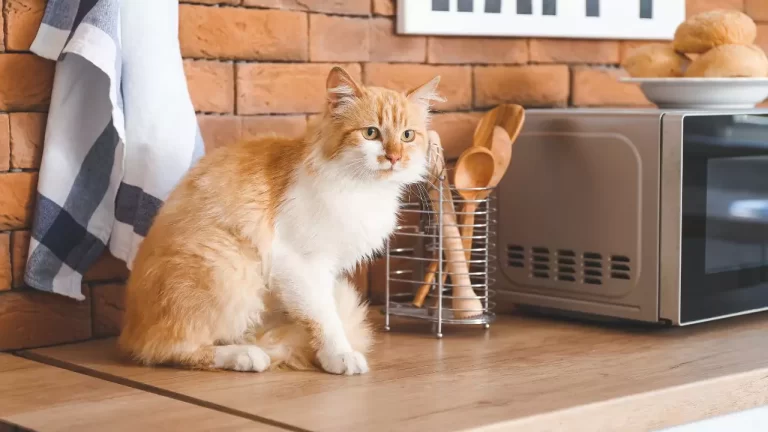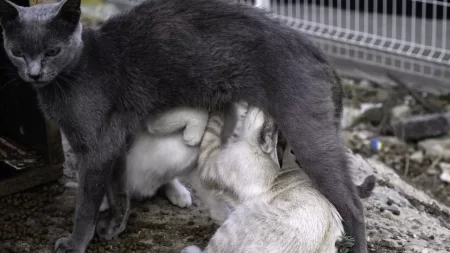No, you should not microwave cat food. Never microwave any pet food. Microwaving cat food can be dangerous and may negatively impact the nutrient content of the food.
There are safer ways to warm up cat food to an appetizing temperature.
Can You Microwave Cat Food?
Microwaving cat food is generally not recommended. There are a few reasons for this:
Safety considerations
Microwaves heat unevenly and can create extremely hot spots in food. This poses a burn risk to your cat. Even if you stir and check the temperature throughout, it is still possible for parts of the food to become dangerously hot.
Cats have very sensitive tongues and mouths. Temperatures that may seem lukewarm to us can burn their mucous membranes. A cautious approach is best to keep your cat safe.
Impact on nutrient content
Microwaving can destroy or degrade certain nutrients in cat food, especially vitamins and antioxidants. This can lower the overall nutritional value of the meal.
Proteins and fats may also become denatured and less digestible. While microwaving is not guaranteed to significantly impact the nutrients in cat food, it does pose an unnecessary risk.
Avoiding overheating
It is very easy to overheat cat food in the microwave. As little as 15 seconds can make the food too hot for your cat to eat right away. This introduces an increased risk of burns.
There is also a safety concern if you reheat refrigerated cat food and parts of the meal become warm while other parts remain cold. This temperature variance can promote bacterial growth.
Other Ways to Warm Up Cat Food
There are safer, more consistent ways to warm your cat’s food other than the microwave. Here are a few options:
Using a portable food warmer
Electric pet food warmers that gently heat cat food are a good alternative. These either plugged or are battery-powered to keep food warmed to your cat’s preferred taste without becoming too hot.
Steaming the food
You can steam refrigerated or room-temperature wet food for a few seconds to gently warm it up. Remove it from the steam as soon as it loses its chill. Be very careful to avoid burns from splashing hot water.
Storing the food at room temperature
Canned cat food that is pate style can usually be stored safely at room temperature for up to 4 hours. You can remove it from the fridge to let it come to room temp before serving.
If you notice any changes in smell, texture, or appearance, throw out that portion instead of feeding it. Bacteria multiply rapidly as food warms up into the “danger zone” between 40-140°F so cat food shouldn’t sit out long.
Is it Safe to Heat Up Wet Cat Food?
Heating up refrigerated wet cat food can make it more enticing by enhancing the aroma and bringing the food to your cat’s preferred temperature. However, there are some important considerations:
Benefits of warming up wet cat food
Cats generally prefer their food to be served at around 100°F. Warming it up releases more scent and moisture to make it more appetizing. This can be helpful for picky cats or those who are ill, elderly, or lacking appetite.
Potential Risks
The biggest risk of warming wet cat food is harmful bacterial growth. Pasteurization kills bacteria in cat food, but this effect doesn’t last forever. As the food cools in the fridge, the remaining bacteria multiply.
Heating this food back up makes it hospitable for bacteria to rapidly reproduce again. Spoiled cat food can cause gastrointestinal upset.
If you do reheat wet cat food, do it immediately before feeding and throw out any leftovers. Only reheat once; repeatedly reheating magnifies the food safety risks.
Conclusion
Microwaving cat food is not recommended. The safety and nutrition risks outweigh any benefits. Gently heating wet cat food can make it more appealing to your cat, but only if done carefully right before feeding. Safer warming methods include food warmers, steaming, or bringing food to room temperature. With some creativity, you can find a warming method that fits your cat’s preferences while minimizing risks.







